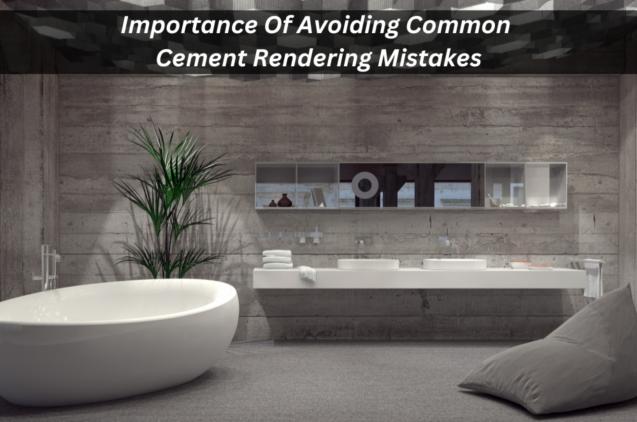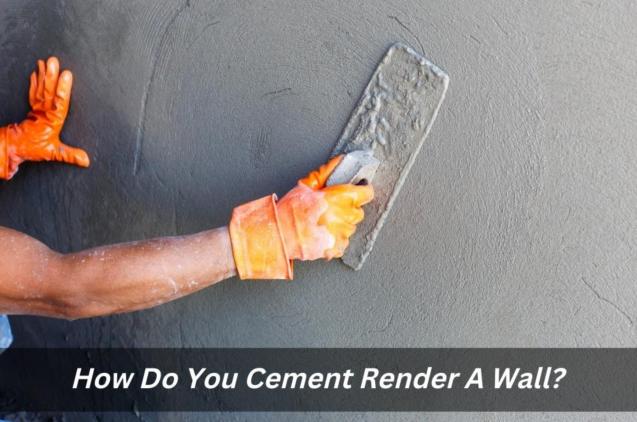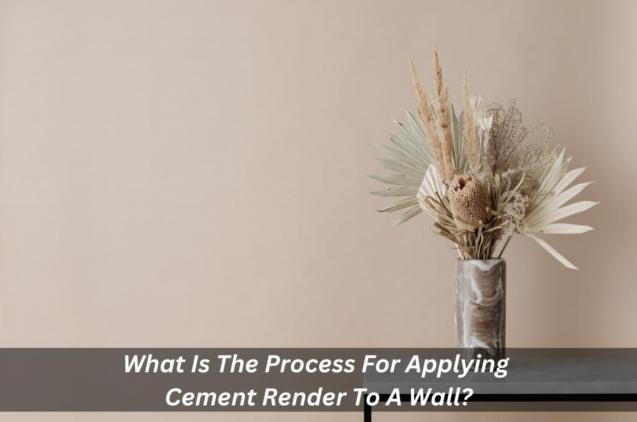
Why Should You Use Cement Rendering Systems?
By Jim's Rendering Sydney|August 31, 2022
Cement rendering is a method of curing concrete structures. In other words, the surface finishes are applied directly onto the fresh concrete instead of being poured over the top. The advantage of this technique is reduced labour costs and fast drying times. Render can be applied to interior and exterior walls.
This can significantly affect construction for its cost effectiveness. To save time and money during your next rendering project, you should consider using traditional rendering mixes. Today there are three main types of renderings that you can create different finishes: polymer, acrylic and cement render.
You don’t always have control over what happens after the concrete is poured. For example, rainwater or snowmelt could cause damage to a structure’s finish. As a result, you may be forced to pour additional layers of concrete.
These extra steps add significant cost to your projects. Instead, use cement renderings, which allow you to apply a protective layer without having to worry about water damage.
There are several types of cement rendered finished available on the market today. Some are more effective than others. Here we will discuss both the advantages and disadvantages of each type so that you can decide for yourself which one best suits your needs.
Different Types of Cement Render System
Then, when ready, the finishing process begins by applying an acrylic sealer coat. After that step is complete, exterior paint is applied.
Advantages:
This is probably the most common type of render used on new concrete projects. It uses less energy than other methods and produces a hard, smooth surface. Since it doesn’t involve any added chemicals, there is little danger of contamination from the soil.
Disadvantages:
The biggest disadvantage of this system is its cost. It requires expensive equipment and skilled workers. Additionally, it takes much longer to set up and implement than other methods, making it impractical for many jobs.
Next, a fine mist of water is added to create a slurry consistency. When the mixture is put into place, the water evaporates quickly and leaves behind a protective coating.
Advantages :
Since this is a water-based method, it does not contain harmful chemicals. It also allows for easy cleanup and reduces the risk of contamination from dirt particles.
Disadvantages :
Although it uses fewer chemicals and makes cleanup easier, it is slower to set up than dry mix techniques. It also requires a lot more care in handling because the liquid can stain clothing and hands.
Advantages:
Acrylics are extremely versatile in terms of colour and texture, allowing you to choose the right look for your project. They are also very durable and typically last 10 years or better.
Disadvantages:
Like all spray paints, acrylics are prone to crack over time due to temperature changes and uneven drying. Also, like cement render products, the application of acrylics must be done within 24 hours of laying concrete, since the cement has only partially cured at this point. Finally, although acrylics are relatively inexpensive, the initial price tag will not include the cost of curing time.
Advantages:
The appearance of stucco is highly customizable. Depending on how rough or smooth you want the surface to appear, you can easily control the amount of sand used.
Disadvantages:
It may take several days for the stucco to cure properly, so it should be done after the concrete has dried. While this process is quite simple, it is also one of the most labour-intensive, requiring lots of mixing and troweling.
Advantages:
Concrete finishes come at a minimal cost compared to many other options.
Disadvantages:
Concrete is somewhat difficult to lay out smoothly, especially when dealing with larger jobs. Homeowners must use special equipment to ensure that the material is applied evenly.
Concrete materials such as cement and concrete are some of the hardest substances known to man. They are also very strong, durable and long-lasting. However, these properties come at a price. Concrete has a high heat capacity and therefore takes days to cure.
So, hope this blog helps you understand the cement rendering system more.
This can significantly affect construction for its cost effectiveness. To save time and money during your next rendering project, you should consider using traditional rendering mixes. Today there are three main types of renderings that you can create different finishes: polymer, acrylic and cement render.
You don’t always have control over what happens after the concrete is poured. For example, rainwater or snowmelt could cause damage to a structure’s finish. As a result, you may be forced to pour additional layers of concrete.
These extra steps add significant cost to your projects. Instead, use cement renderings, which allow you to apply a protective layer without having to worry about water damage.
There are several types of cement rendered finished available on the market today. Some are more effective than others. Here we will discuss both the advantages and disadvantages of each type so that you can decide for yourself which one best suits your needs.
Different Types of Cement Render System
- Dry-Mix
Then, when ready, the finishing process begins by applying an acrylic sealer coat. After that step is complete, exterior paint is applied.
Advantages:
This is probably the most common type of render used on new concrete projects. It uses less energy than other methods and produces a hard, smooth surface. Since it doesn’t involve any added chemicals, there is little danger of contamination from the soil.
Disadvantages:
The biggest disadvantage of this system is its cost. It requires expensive equipment and skilled workers. Additionally, it takes much longer to set up and implement than other methods, making it impractical for many jobs.
- Water-Based
Next, a fine mist of water is added to create a slurry consistency. When the mixture is put into place, the water evaporates quickly and leaves behind a protective coating.
Advantages :
Since this is a water-based method, it does not contain harmful chemicals. It also allows for easy cleanup and reduces the risk of contamination from dirt particles.
Disadvantages :
Although it uses fewer chemicals and makes cleanup easier, it is slower to set up than dry mix techniques. It also requires a lot more care in handling because the liquid can stain clothing and hands.
- Acrylic Coating Process
Advantages:
Acrylics are extremely versatile in terms of colour and texture, allowing you to choose the right look for your project. They are also very durable and typically last 10 years or better.
Disadvantages:
Like all spray paints, acrylics are prone to crack over time due to temperature changes and uneven drying. Also, like cement render products, the application of acrylics must be done within 24 hours of laying concrete, since the cement has only partially cured at this point. Finally, although acrylics are relatively inexpensive, the initial price tag will not include the cost of curing time.
- Stucco Rendering
Advantages:
The appearance of stucco is highly customizable. Depending on how rough or smooth you want the surface to appear, you can easily control the amount of sand used.
Disadvantages:
It may take several days for the stucco to cure properly, so it should be done after the concrete has dried. While this process is quite simple, it is also one of the most labour-intensive, requiring lots of mixing and troweling.
- Concrete Finishing Methods
Advantages:
Concrete finishes come at a minimal cost compared to many other options.
Disadvantages:
Concrete is somewhat difficult to lay out smoothly, especially when dealing with larger jobs. Homeowners must use special equipment to ensure that the material is applied evenly.
Concrete materials such as cement and concrete are some of the hardest substances known to man. They are also very strong, durable and long-lasting. However, these properties come at a price. Concrete has a high heat capacity and therefore takes days to cure.
So, hope this blog helps you understand the cement rendering system more.



